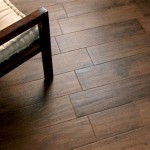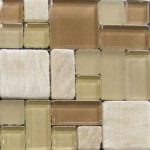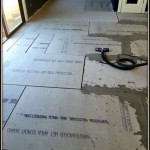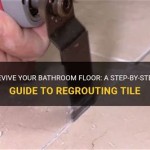How To Clean Bathroom Shower Tile Floor: A Comprehensive Guide
The bathroom shower tile floor is a frequent target for grime, mildew, and soap scum. The warm, humid environment promotes the growth of mold and bacteria, making regular cleaning essential for maintaining a hygienic and aesthetically pleasing bathroom. Neglecting these issues can lead to stubborn stains, unpleasant odors, and even health concerns. This article provides a comprehensive guide to effectively cleaning your bathroom shower tile floor, covering various cleaning methods, tools, and preventative measures.
Understanding the Challenges of Shower Tile Floor Cleaning
Several factors contribute to the difficulty of cleaning shower tile floors. The constant exposure to water and humidity encourages the proliferation of mold and mildew, which can penetrate the grout and become deeply embedded. Soap scum, a byproduct of soap reacting with hard water minerals, adheres tightly to the tile surface, creating a dull and unsightly film. Mineral deposits from hard water, such as calcium and lime, can also build up, leaving behind stubborn stains. Understanding these challenges is the first step in choosing the right cleaning approach.
Furthermore, the type of tile and grout used in the shower can influence the cleaning methods and products that are suitable. Certain types of tile, such as natural stone, may be sensitive to harsh chemicals and require specialized cleaning solutions. The grout, being porous, is particularly susceptible to staining and discoloration. Therefore, it's crucial to consider the specific materials of your shower tile floor before beginning the cleaning process.
Finally, different types of stains require different treatments. While basic soap scum can often be removed with simple cleaning solutions, more stubborn stains like mildew and hard water deposits may necessitate stronger chemicals or specialized cleaning tools. Identifying the type of stain present will help to tailor the cleaning approach for optimal results.
Essential Tools and Supplies for Shower Tile Floor Cleaning
To effectively clean a bathroom shower tile floor, it is necessary to gather the appropriate tools and supplies. These typically include:
*Cleaning Solutions:
A variety of cleaning solutions can be used, ranging from mild detergents to specialized tile and grout cleaners. Consider using a pH-neutral cleaner for regular cleaning, especially on natural stone tiles. For tougher stains, solutions containing bleach, vinegar, or hydrogen peroxide may be necessary. It's always important to test the cleaning solution in an inconspicuous area first to ensure it does not damage the tile or grout. *Scrub Brushes:
Scrub brushes are essential for removing dirt, grime, and soap scum from the tile surface and grout lines. A stiff-bristled brush is generally effective for scrubbing tile, while a smaller, angled brush is useful for cleaning grout lines. An electric scrub brush can significantly reduce the effort required for thorough cleaning. *Spray Bottle:
A spray bottle is ideal for applying cleaning solutions evenly across the tile floor. It allows for targeted application and prevents excessive use of the cleaning product. *Squeegee:
A squeegee helps to remove excess water from the tile floor after cleaning, preventing water spots and mineral deposits. It also aids in drying the tile and grout quickly, which minimizes the risk of mold and mildew growth. *Microfiber Cloths:
Microfiber cloths are excellent for wiping down surfaces and removing residue. They are soft, absorbent, and non-abrasive, making them suitable for cleaning tile without scratching it. *Gloves and Eye Protection:
Wearing gloves protects the hands from harsh chemicals and potential irritants. Eye protection is also recommended to prevent splashes of cleaning solution from entering the eyes. *Ventilation:
Proper ventilation is crucial when cleaning with chemicals. Open a window or turn on the bathroom exhaust fan to ensure adequate airflow and prevent the build-up of fumes.Step-by-Step Cleaning Methods for Shower Tile Floors
There are several effective methods for cleaning bathroom shower tile floors, depending on the severity of the grime and the type of tile. The following are three common approaches:
1. Basic Cleaning with Detergent and Water
This method is suitable for regular cleaning and removing light soap scum and dirt. The procedure involves:
*Preparation:
Remove any loose debris, such as hair or soap residue, from the tile floor. *Application:
Mix a mild detergent, such as dish soap, with warm water in a bucket. *Scrubbing:
Apply the soapy water to the tile floor using a sponge or mop. Scrub the tile and grout lines with a scrub brush. *Rinsing:
Rinse the tile floor thoroughly with clean water to remove all traces of soap. *Drying:
Use a squeegee to remove excess water and dry the tile floor with a clean microfiber cloth.2. Cleaning with Vinegar and Baking Soda
This method is effective for removing soap scum, hard water stains, and mild mildew. The process involves:
*Preparation:
Ensure the shower area is well-ventilated. *Application:
Create a paste of baking soda and water (or vinegar for tougher stains). Apply the paste to the tile and grout lines. *Scrubbing:
Allow the paste to sit for 15-20 minutes, then scrub the tile and grout lines with a scrub brush. *Rinsing:
Rinse the tile floor thoroughly with clean water to remove all traces of baking soda or vinegar. *Drying:
Use a squeegee to remove excess water and dry the tile floor with a clean microfiber cloth. *Important Note:
Avoid using vinegar on natural stone tiles, as it can damage the surface. For natural stone, use a pH-neutral stone cleaner instead.3. Cleaning with Bleach (for Stubborn Mildew)
This method should be used sparingly and with caution, as bleach can be harmful to both the tile and the user. It is effective for removing stubborn mildew and mold stains. The procedure involves:
*Preparation:
Wear gloves and eye protection. Ensure the shower area is well-ventilated. *Dilution:
Mix bleach with water in a ratio of 1:10. *Application:
Apply the bleach solution to the affected areas using a spray bottle or sponge. *Waiting:
Allow the solution to sit for 10-15 minutes. *Scrubbing:
Scrub the tile and grout lines with a scrub brush. *Rinsing:
Rinse the tile floor thoroughly with clean water to remove all traces of bleach. *Drying:
Use a squeegee to remove excess water and dry the tile floor with a clean microfiber cloth. *Important Note:
Never mix bleach with ammonia or other cleaning products, as this can create toxic fumes. Always test the bleach solution in an inconspicuous area first to ensure it does not damage the tile or grout.Addressing Specific Stain Challenges
Understanding the nature of stains on shower tiles helps in selecting the correct removal technique. Here's a breakdown of common stains and targeted solutions:
*Soap Scum:
As mentioned earlier, soap scum arises from the interaction of soap with hard water minerals. Vinegar-based solutions are usually effective in dissolving soap scum. Alternatively, commercial soap scum removers are readily available. Regular wiping down of the shower walls after use can prevent soap scum buildup. *Mold and Mildew:
These fungal growths thrive in damp environments. Bleach solutions, as described above, are potent against them. However, proper ventilation is crucial when using bleach. For less severe cases, hydrogen peroxide can also be effective. Preventing mold and mildew involves ensuring adequate ventilation and prompt drying of the shower area after use. *Hard Water Stains:
These stains are caused by mineral deposits like calcium and lime. Vinegar is a common remedy for these stains. Commercial hard water stain removers are also available, often containing citric or phosphoric acid. Installing a water softener can prevent the formation of hard water stains in the first place. *Rust Stains:
Rust can occur from metal objects left in the shower. Commercial rust removers are designed to tackle these stains. Lemon juice, due to its acidity, can also help dissolve rust. Preventing rust stains involves avoiding leaving metal items in the shower for extended periods.Preventative Measures for Maintaining a Clean Shower Tile Floor
Preventative measures are key to minimizing the buildup of dirt, grime, and mold on shower tile floors. Regular cleaning, proper ventilation, and addressing standing water are crucial steps. Here are some practical preventative actions:
*Regular Cleaning:
Wiping down the shower walls and floor after each use can prevent the accumulation of soap scum and water spots. A quick squeegee or towel dry goes a long way. A weekly deep clean using a mild detergent or vinegar solution can further prevent buildup. *Proper Ventilation:
Ensure adequate ventilation in the bathroom by opening a window or running the exhaust fan during and after showering. This helps to reduce humidity levels, inhibiting mold and mildew growth. *Addressing Standing Water:
Immediately remove any standing water from the shower floor after use. Standing water provides a breeding ground for bacteria and mold. *Using a Squeegee:
A squeegee is an invaluable tool for removing water from the tile and glass surfaces after showering. This helps prevent water spots and mineral deposits. *Regular Grout Sealing:
Grout is porous and susceptible to staining. Sealing the grout regularly (typically every six months to a year) helps to protect it from water damage and staining. *Choosing the Right Cleaning Products:
Avoid using abrasive cleaners that can scratch the tile surface. Opt for pH-neutral cleaners or those specifically designed for tile and grout. *Replacing Shampoos and Soaps:
Consider switching to liquid soaps and shampoos which contain fewer talc and fatty acids that contribute to the build-up of soap scum. *Install a Water Softener:
For those with hard water, installing a water softener can significantly reduce the amount of mineral deposits that accumulate on the tile floor.By implementing these preventative measures, the frequency and intensity of cleaning can be significantly reduced, maintaining a clean and healthy bathroom environment.

7 Most Powerful Ways To Clean Tiles Grout Naturally

7 Most Powerful Ways To Clean Tiles Grout Naturally

Glass Tile Shower Cleaning Tips Every Lover Should Know

How To Clean Mold In Shower Grout Tips And Tricks Certified Care

How To Clean Grout In Your Shower Alpine Carpet Cleaning

How To Clean Marble Shower Tile And Grout Easy Safe Steps Abbotts At Home

That White Chalky Build Up In Your Shower Is Efflorescence Read How It Was Removed With A Tile Cleaning Waban Ma

How To Get Rid Of Pink Mold In Your Shower

Best Way To Clean Bathroom Tiles

How To Clean Floor Tile Grout In The Bathroom Clorox
Related Posts








